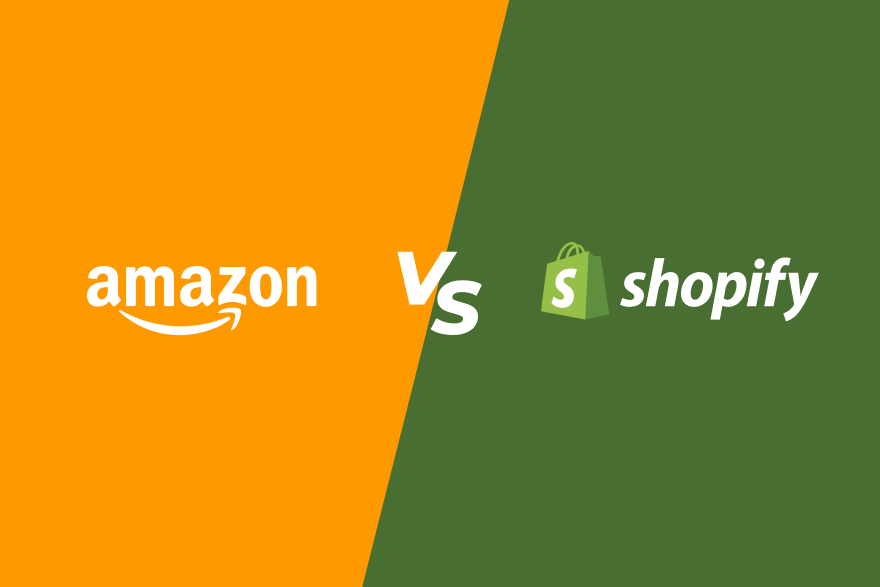If you are recalling where you have heard this, it's Shopify's slogan. It's crucial to delineate how Amazon and Shopify differ to get a good sense of what will follow.
Just a quick recap,
Amazon started as a first-party website to sell books and then later diversified into other items. By 2001, it had also opened up its platform for third party sellers to list. This led to a lot of small businesses listing on Amazon's platform. Because of amazon's size (+ some preferences), a lot of small businesses dont get visibility on Amazon. Additionally, they have to comply with Amazon's rules on returns etc.
Importantly, like I outlined in the previous article, the creator aka small business could not even own the customer relationship. And with Amazon's dreams of becoming the world's largest retailers, small retailers all across the world were threatened.
Shopify, took the other route and said that instead of displacing the retailer, they want to empower them. So they gave tools to physical shop owners to make a website online, list their products and even tie-up with delivery partners.
Now, let's uncover a bit more on what is happening.
A retailer basically needs
a website to list products
payments
logistics
Now let's look at this from a food delivery perspective in India.
Swiggy and Zomato aggregated restaurants and owned customers. DotPe, Dukaan etc work with the restaurants to empower them. Swiggy and Zomato control the traffic allocation for restaurants, whereas Dotpe works with the assumption of restaurants having some traffic and then working on the top of it. In the platform case, the restaurant inevitably resorts to digital ads etc for bringing in demand.
Do you notice the pattern here?
Aggregator starts to combine all physical entities to give more choice to the customer. It owns the customer relationship and sets the rules. The physical entities get dissatisfied and look for alternate platforms. All the alternate needs is a website, payments and logistics infra.
The broader point is that while disrupting physical incumbents has turned out to be a good business model, empowering them is also a good one. The former solves for kickstarting your business, the latter solves for freedom in running it.
This is special because when we see a trend, our tendency is to linearly extrapolate it. These examples show that it is worthwhile to bet on the counter, since growth in the first trend often leads to problems that are opportunities for the counter positioned.
Secondly, if you truly abstract it out, what the physical entity in almost each space needs is website, payments and delivery. This is exactly why Shopify is so large and it's TAM is even larger.
Surprisingly, this trend has not happened in the taxi aggregation space. You dont find alternate platforms to enable ride bookings. My sense is this is because
transport is truly commoditised - you care much more about going from A to B than how you go
taxi as a unit is much smaller - considering it's a momentary activity and it's tough to build repeat behavior for a single taxi because of geographical constraints + the above point, it doesnt make sense to have a website for each taxi.
So what does it mean if you are one of these entities - a physical goods manufacturer, a restaurant etc?
You start with an aggregator to get demand. As you grow larger and invest in building your brand through a combination of trust plus marketing, you slowly start owning your own space on a platform. Use the aggregator for acquisition (which is harder than it sounds because everyone else will also be doing the same thing) and use your own platform for retention. You will never be able to completely eliminate an aggregator because of the new users it provides and also because even if you have your own website, you’re still relying on the largest aggregator of all, Google, for your website discovery. But by gradually reducing your reliance on them due to the power you get through your own brand recall, you start governing the playing field.
Some examples of brands who have done this well are Boat, Behrouz Biryani etc.
If you haven’t read yet, you’ll also like my previous article on Content Value Chains. For any thoughts or suggestions on what you want me to write about further, please comment on this post.





interesting thought. was just thinking about the same recently - where do you give control to your distributors, and when do you gain that control back from them. of course, you have outlined the product elements of it, but this thought process extends to every aspect of the business (operations, marketing, etc)